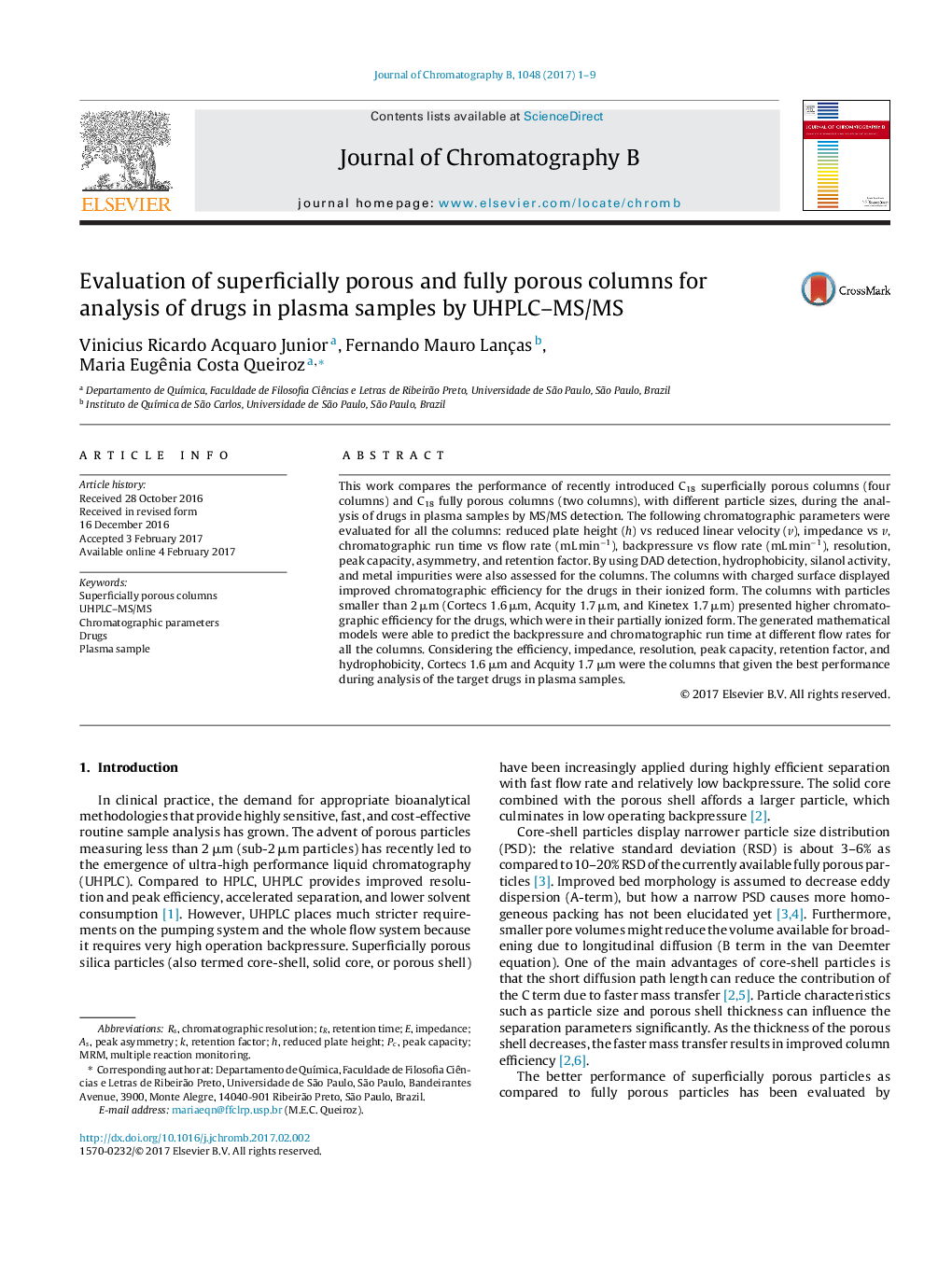| Article ID | Journal | Published Year | Pages | File Type |
|---|---|---|---|---|
| 5136480 | Journal of Chromatography B | 2017 | 9 Pages |
â¢Comprehensive study between superficially and fully porous columns.â¢Analysis of drugs in plasma samples using MS/MS and DAD detection.â¢Mathematical models to predict the backpressure and the chromatographic run time.â¢Positively charged sub-2 μm particles showed the best chromatographic performance.
This work compares the performance of recently introduced C18 superficially porous columns (four columns) and C18 fully porous columns (two columns), with different particle sizes, during the analysis of drugs in plasma samples by MS/MS detection. The following chromatographic parameters were evaluated for all the columns: reduced plate height (h) vs reduced linear velocity (v), impedance vs v, chromatographic run time vs flow rate (mL minâ1), backpressure vs flow rate (mL minâ1), resolution, peak capacity, asymmetry, and retention factor. By using DAD detection, hydrophobicity, silanol activity, and metal impurities were also assessed for the columns. The columns with charged surface displayed improved chromatographic efficiency for the drugs in their ionized form. The columns with particles smaller than 2 μm (Cortecs 1.6 μm, Acquity 1.7 μm, and Kinetex 1.7 μm) presented higher chromatographic efficiency for the drugs, which were in their partially ionized form. The generated mathematical models were able to predict the backpressure and chromatographic run time at different flow rates for all the columns. Considering the efficiency, impedance, resolution, peak capacity, retention factor, and hydrophobicity, Cortecs 1.6 μm and Acquity 1.7 μm were the columns that given the best performance during analysis of the target drugs in plasma samples.
